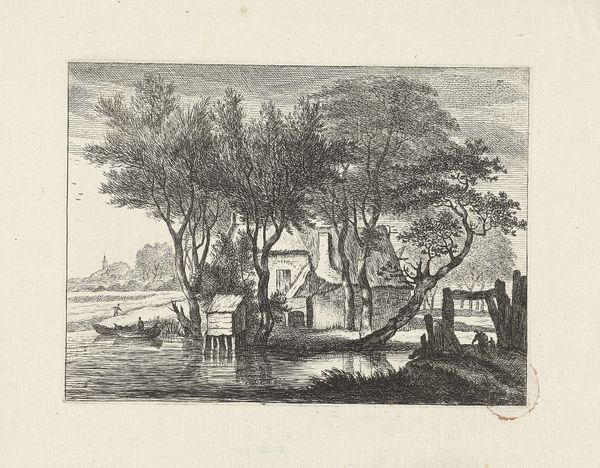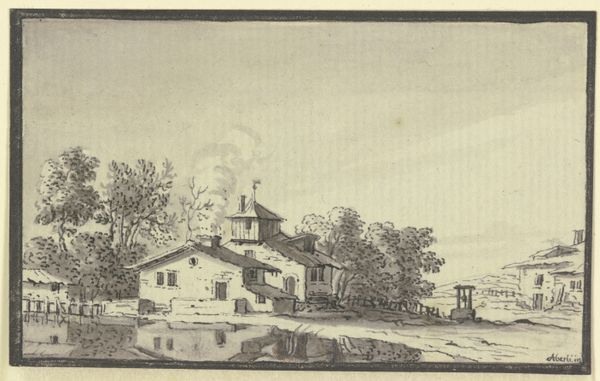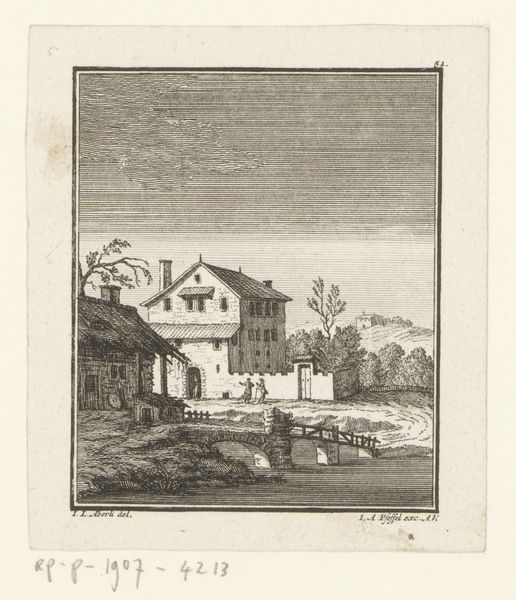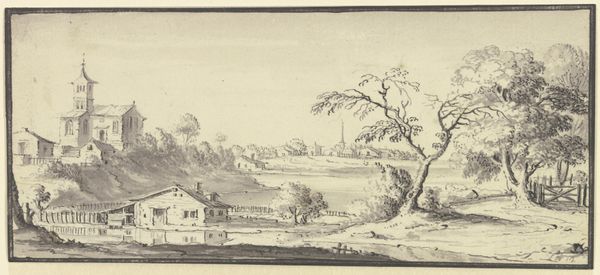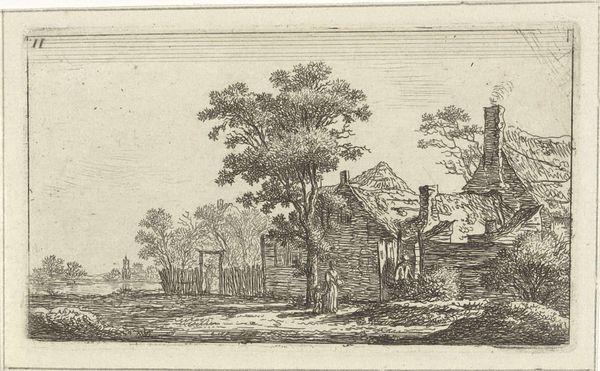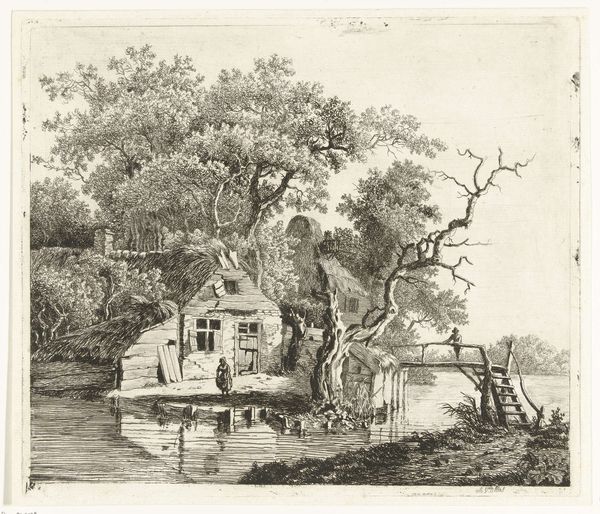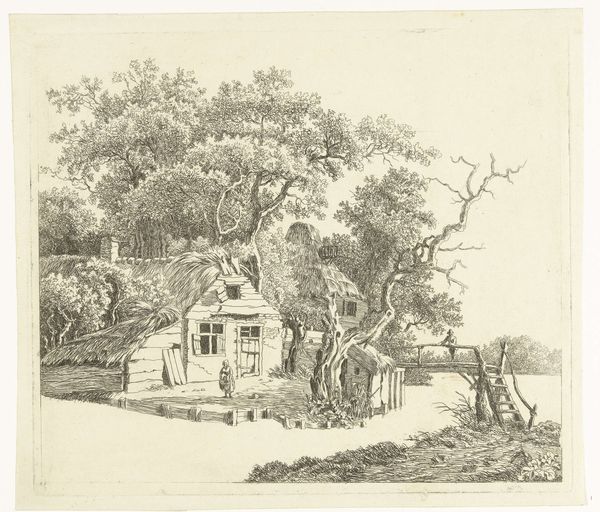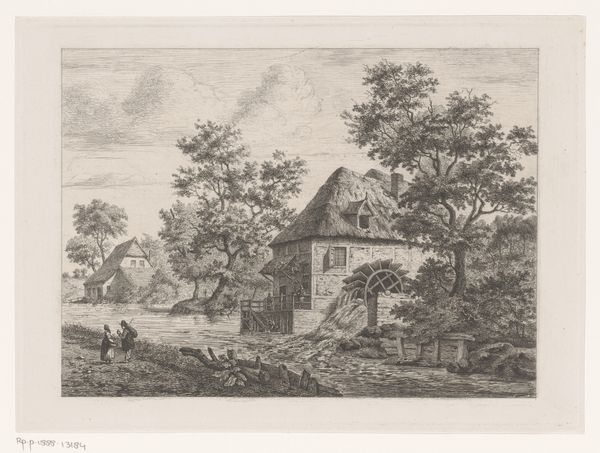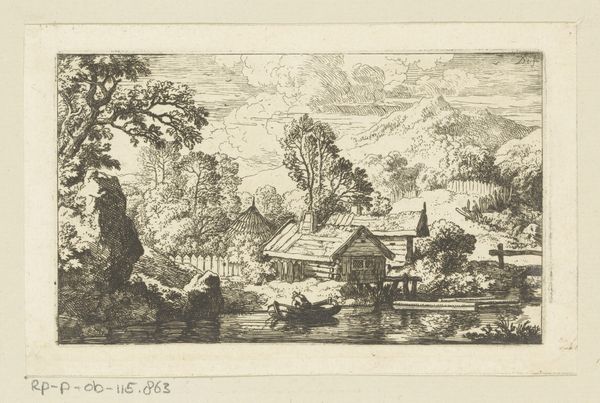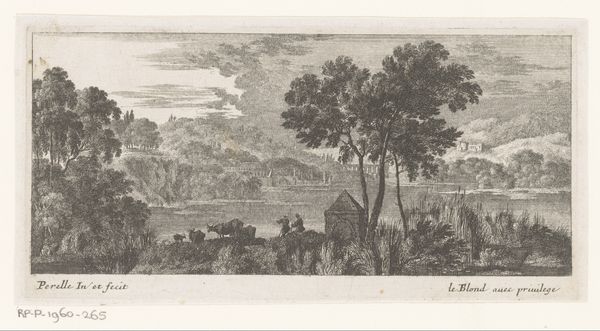
drawing, print, pen, engraving
#
drawing
#
baroque
# print
#
old engraving style
#
traditional media
#
landscape
#
pen-ink sketch
#
sketchbook drawing
#
pen
#
cityscape
#
engraving
Dimensions: height 120 mm, width 162 mm
Copyright: Rijks Museum: Open Domain
Curator: I’m struck by the sheer density of marks in this etching, an incredible amount of detail achieved with simple lines. Editor: Indeed. We are looking at "Gezicht op een landhuis," or "View of a Manor House," a pen and ink drawing, subsequently printed as an engraving by Johann Andreas Pfeffel, sometime between 1725 and 1768. It’s a rather charming piece, wouldn't you agree? The crisp lines delineate form so effectively. Curator: Charming, yes, but consider the labor. These engravings necessitated skilled artisans to meticulously carve these scenes, essentially mass-producing picturesque idylls for bourgeois consumption. Notice the way the landscape is arranged - almost stage-like? It's a manufactured naturalism for a burgeoning leisure class. Editor: I perceive something quite different. The tonal variations, achieved through careful hatching and cross-hatching, articulate a hierarchy of forms within the pictorial space, drawing our eye from the rustic structures towards the suggestion of a larger estate in the distance. The composition utilizes aerial perspective very effectively to create a sense of depth and atmosphere. Curator: Yet, those idyllic cottages serve an estate, inevitably involving laborers obscured from the view. We're not given glimpses into their conditions, only an ordered façade. The medium itself, engraving, facilitated widespread distribution. Whose story were these prints designed to serve? It is, in effect, early real estate propaganda! Editor: Your perspective certainly challenges the work's initial impression. I had initially read the picturesque landscape as an invocation of timeless beauty, reflecting the Baroque appreciation for clarity and structured composition, especially that very pronounced foreground. Now you've got me wondering what it conceals. Curator: Precisely! It's through material understanding, acknowledging how these prints were conceived, made, disseminated and consumed that the broader narratives become clearer. The etching needle, the printing press – these were instruments of not just art, but of social and economic forces. Editor: Well, I leave with a fresh appreciation, having looked at the artwork with new eyes. It highlights the power of technique not just in artistic expression, but in the transmission of larger cultural messages, intended or not.
Comments
No comments
Be the first to comment and join the conversation on the ultimate creative platform.
